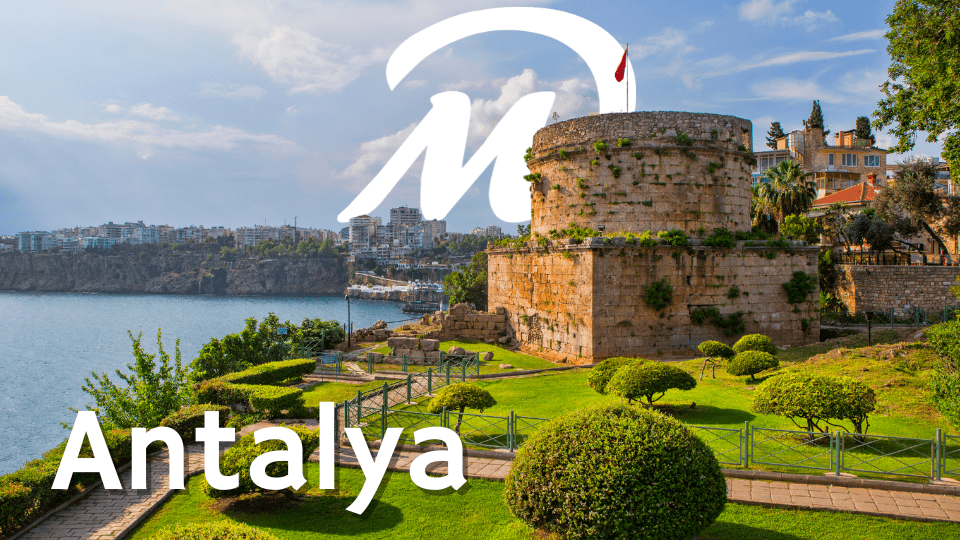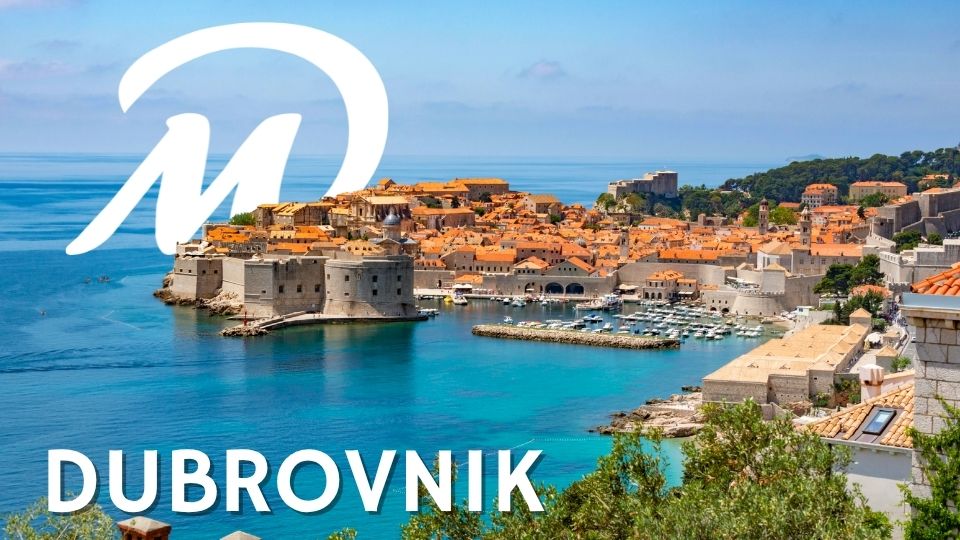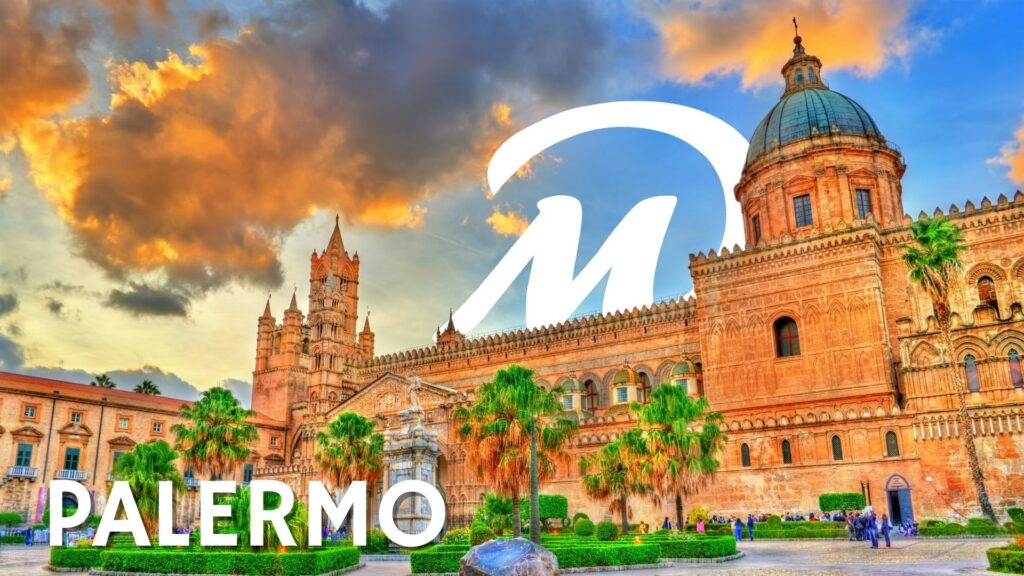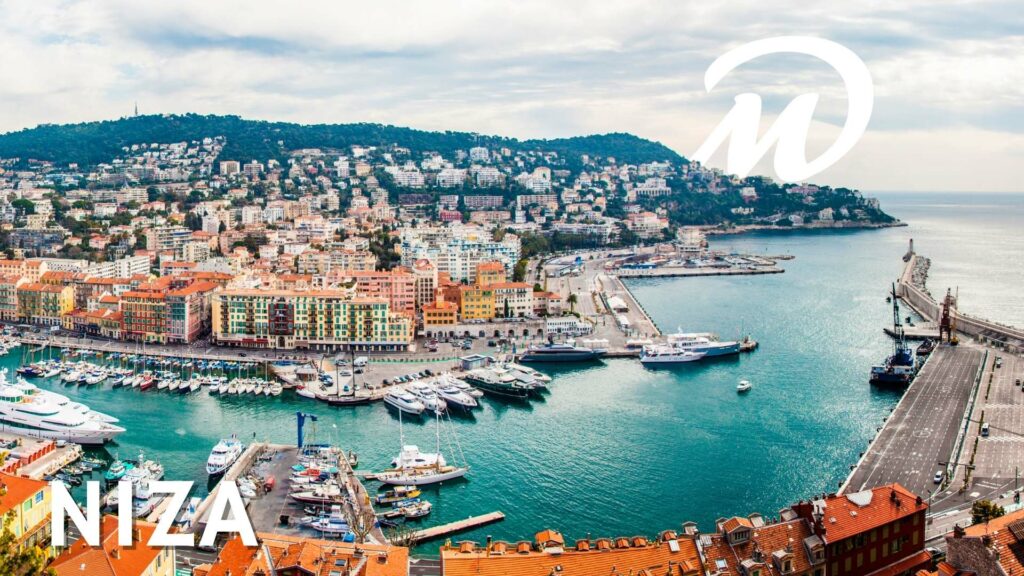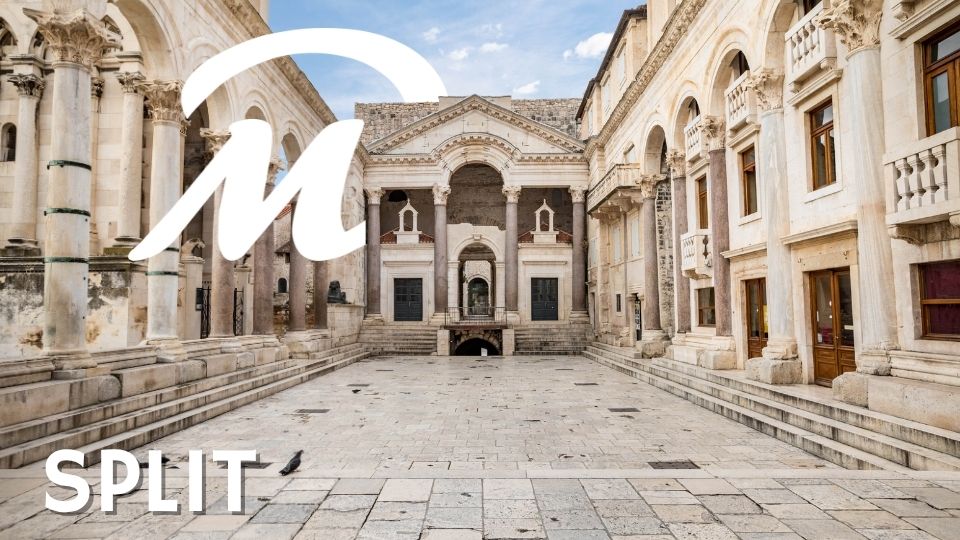
Split wasn’t in your top 3, was it? Maybe you just saw it as a stopover between Dubrovnik and the islands. But here you are, looking for the best things to do in Split and about to understand why so many travellers end up falling in love with its narrow streets.
You don’t have to be an expert in Roman history to be fascinated by a city that grew up inside a palace. Nor do you need to have everything planned out for every corner to surprise you. Sometimes it is enough to lose yourself in the old town, to look up at the Peristyle or to follow the smell of the sea as far as the Riva.
Split is not perfect, nor does it pretend to be. It is chaotic, lively, with accents mingling on the terraces, stones crunching underfoot and centuries overlapping without asking permission.
If you are preparing your trip and are wondering what are the must things to do in Split so that you don’t miss the best, in this guide I take you step by step through its must-sees, its lesser-known places and those little things that make you want to come back.
Do you want to keep searching through blogs, or would you prefer to have your guide to Split ready to go?
The DareMapp app makes it easy. Enjoy the COMPLETE GUIDE ON YOUR PHONE and experience every corner in a unique way.
No timetables and at your own pace.
Must-sees in Split: the Diocletian’s Palace and its key sights
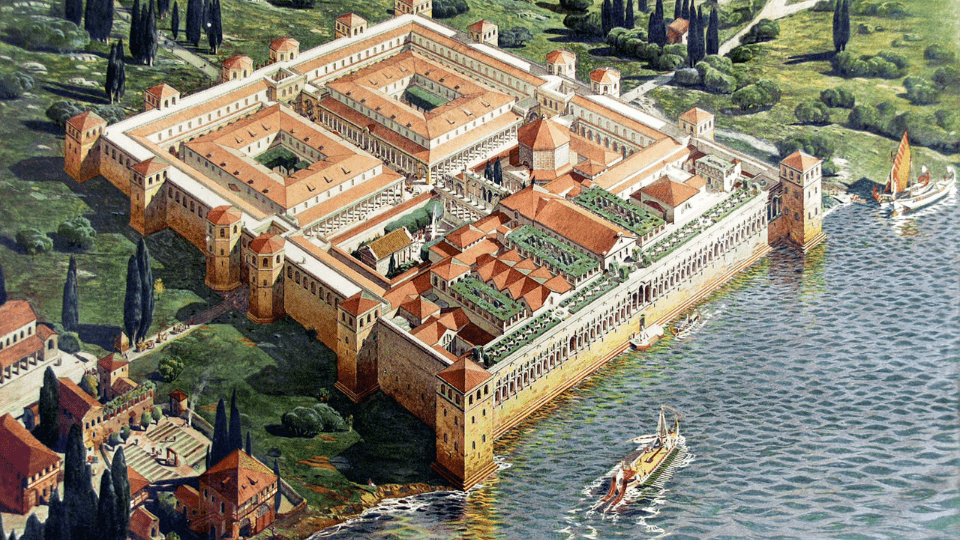
If you are looking for the best things to do in Split, you cannot miss Diocletian’s Palace, the historical and cultural heart of the city. Built in the early 4th century by order of the Roman Emperor Diocletian, this walled complex is not just a palace, but a small city that gave birth to the old town.
Within its walls you will find a network of streets, squares, shops, churches and markets that still keep alive the spirit of Roman times, mixed with centuries of history. To walk through this place is to travel back in time as you discover how the city grew around this fortress that became the nerve centre of Split.
Here are the must-see stops inside Diocletian’s Palace to help you make the most of your visit and understand why they are a key point among the things to do in Split.
👁️ Discover and explore the must things to do in Split, the walled city that hides a whole world inside its palace.
Don’t miss it. With DareMapp, your new sightseeing app, guide on your mobile and without the hassle!
The Golden Gate
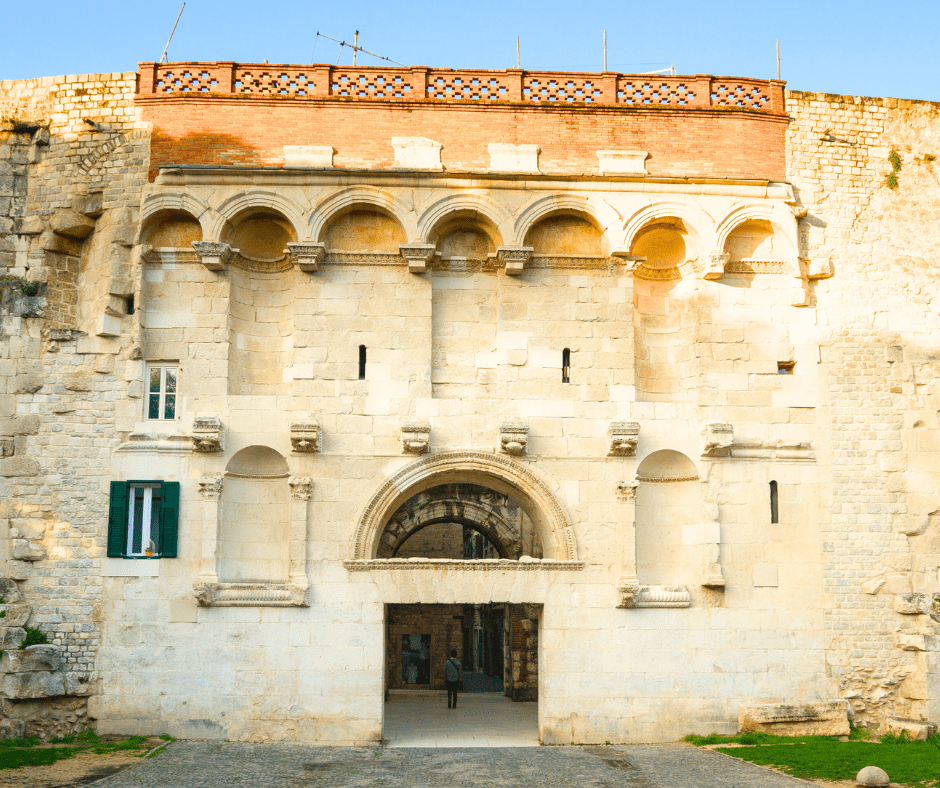
One of the first things to do in Split inside Diocletian’s Palace is the Golden Gate, the main entrance to the walled complex. This monumental gate, built in the 4th century, was designed to control access to the imperial residence and protect the city.
When you cross the Golden Gate, you enter a world where history and everyday life intertwine. Its imposing stone structure still preserves details that speak of Roman grandeur and its defensive function.
From here, you begin the tour through the streets and squares that make up the old town of Split, which was born precisely around this palace. The Golden Gate is not only a physical entrance, but also the gateway to a journey through time that you cannot miss if you want to discover the top things to do in Split in depth.
💡 Curiosity: The Golden Gate is the only one of the four palace gates that still preserves the original ancient bronze hinges, a small miracle of Roman engineering.
Peristyle Square
Today, the Peristyle remains a lively and energetic meeting place. Walking around here, you will feel how history blends with the present: musicians, artists and tourists fill the space, giving it a unique atmosphere.
In addition, the Peristyle connects to other important spaces in the palace, so visiting it helps you understand how this authentic walled city functioned.
The Peristyle is the heart of Diocletian’s Palace and a must-see for those looking for things to do in Split. This open square, surrounded by classical columns, was the site of official ceremonies and public events during Roman times.
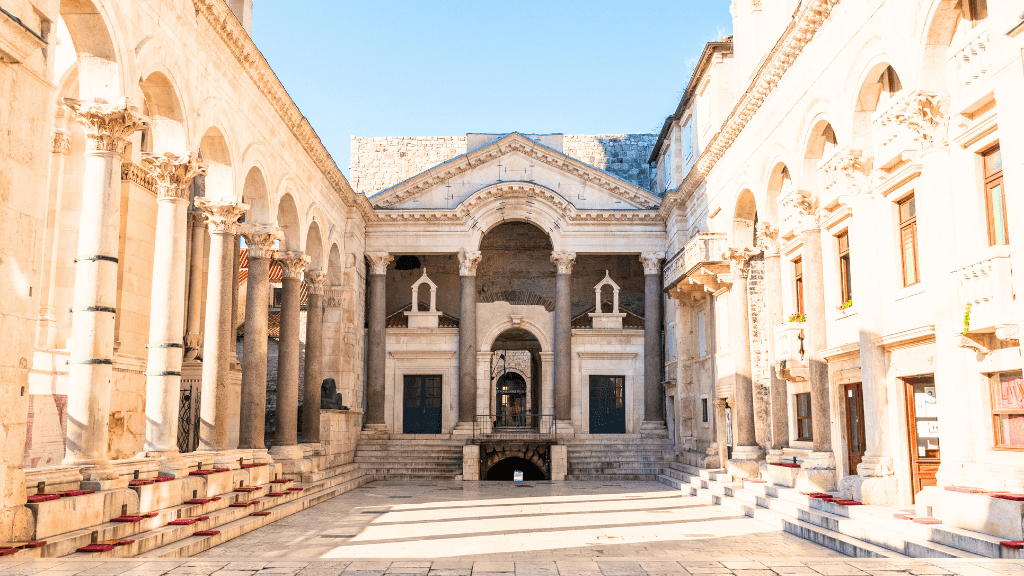
💡 Curiosity: During the summer, the Peristyle becomes the stage for open-air concerts and cultural events, keeping alive the tradition of being the social centre of Split for almost two thousand years.
St. Domnius Cathedral
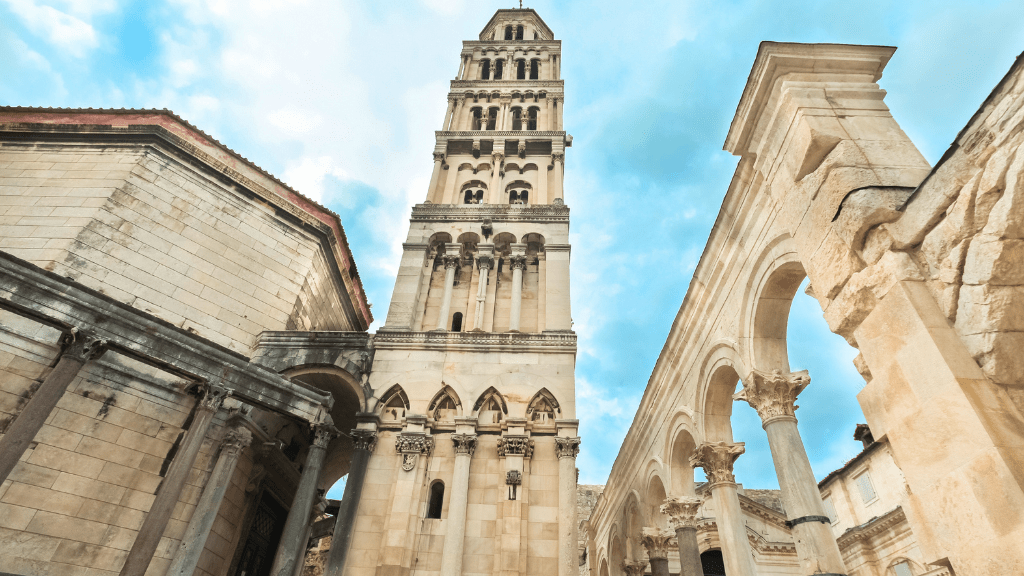
Inside Diocletian’s Palace, St. Domnius Cathedral is one of the must things to do in Split. This building began as the mausoleum of Emperor Diocletian in the early 4th century, and in the 7th century it was transformed into the city’s cathedral, adapting to historical needs and changes.
Its architecture is a reflection of the different eras it has lived through: from Romanesque to Gothic and Renaissance elements. On entering, the atmosphere invites calm, with artistic and religious details that merit a leisurely glance.
Moreover, the cathedral is closely linked to Split’s history and is a living example of how the city grew and transformed around the palace that gave birth to it.
💡 Curiosity: The cathedral preserves the original tomb of Diocletian, a tangible reminder of the emperor who shaped this city.
Bell tower of St. Domnius Cathedral
Right beside the cathedral, the iconic bell tower of St. Domnius is one of the essential things to do in Split. Its construction began in the 12th century, but it was a work in constant evolution that lasted until the 20th century, which explains the mixture of architectural styles that characterise it.
Climbing its more than 150 steps is worth it for the panoramic views: from the top you can see the old town, Diocletian’s Palace and the glittering Adriatic Sea. It is, without a doubt, an ideal spot to understand how history, architecture and landscape intertwine in Split.
💡 Curiosity: At the top of the bell tower you will see a golden figure representing a rooster, a symbol of vigilance and protection for the city.
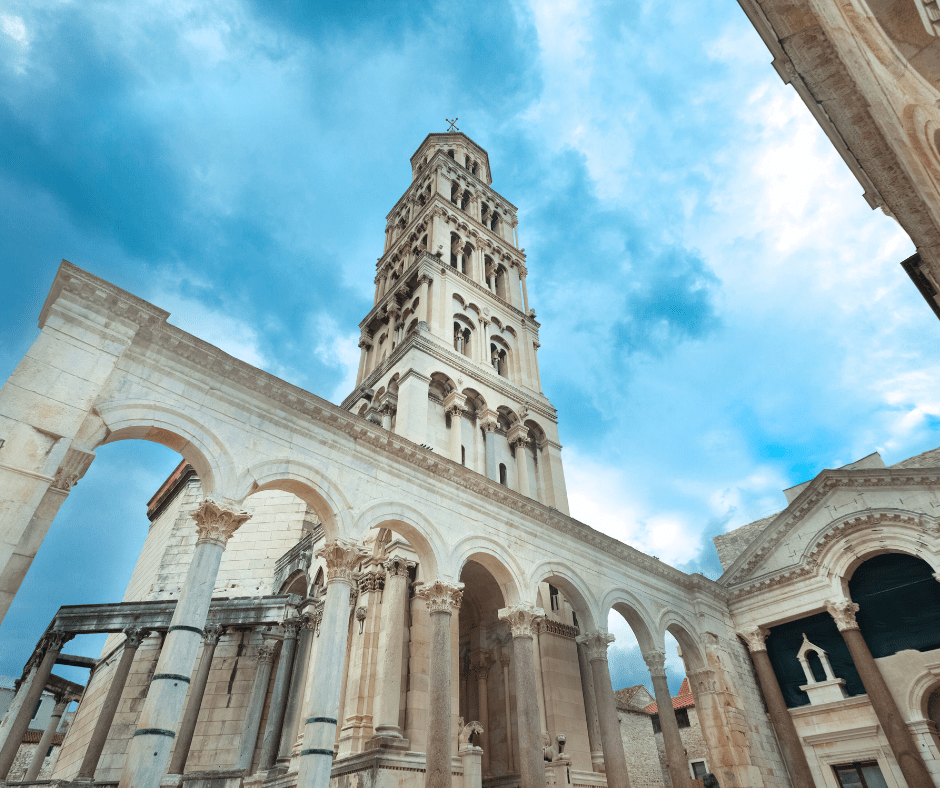
Substructures of the Palace (Basements)
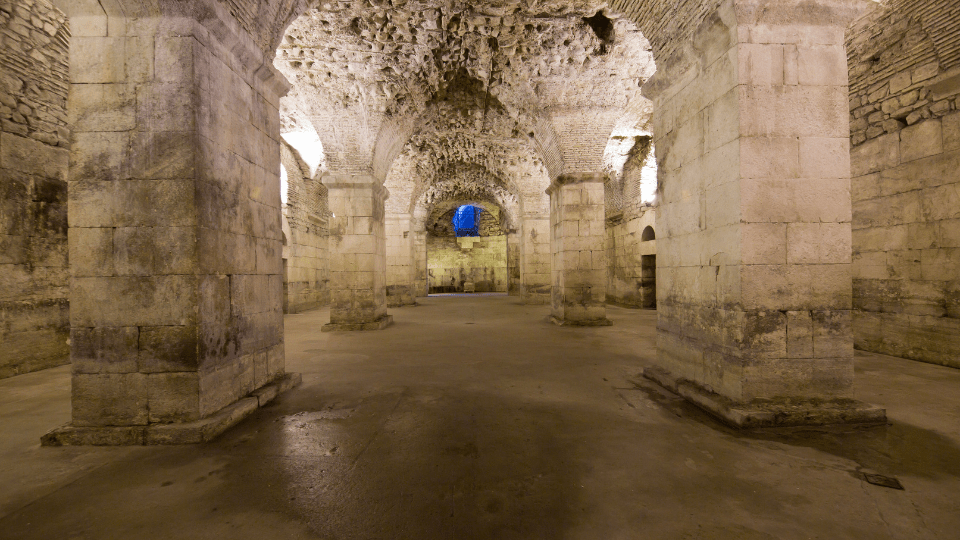
One of the most fascinating things to do in Split are the substructures of Diocletian’s Palace, located beneath the Peristyle and the rest of the complex. These basements served to level the ground and support the imperial residence, and today offer a unique window into Roman engineering.
As you walk through these underground spaces, you can see the original foundations and how everything was designed to stand the test of time. The dim lighting and arched vaults create an atmosphere that transports the visitor back almost 1,800 years.
These substructures also had a practical function over the centuries: in the Middle Ages they served as shelter and storage, and today they form an essential part of the visit to understand the history and architecture of the palace.
💡 Curiosity: The substructures were the setting for several scenes in the series Game of Thrones, which has increased the interest of travellers and fans of the series to visit them.
📲 Do you want to keep searching online or start your adventure now? With the DareMapp app you won’t waste a minute.
YOUR SPLIT VISIT ALREADY ORGANISED AND AT YOUR OWN PACE.
Temple of Jupiter
Very close to the Peristyle is the Temple of Jupiter, one of the best preserved monuments of the Roman period in Split. This temple was dedicated to the god Jupiter, the highest deity in the Roman pantheon, and reflects the religious importance of the palace beyond being just a residence.
Built in the 4th century, the temple is notable for its imposing gate with Corinthian columns and for the original statue of Jupiter that crowned its roof. Although it remains in ruins today, to walk among its remains is to glimpse the spirituality and power that accompanied Diocletian in his retreat.
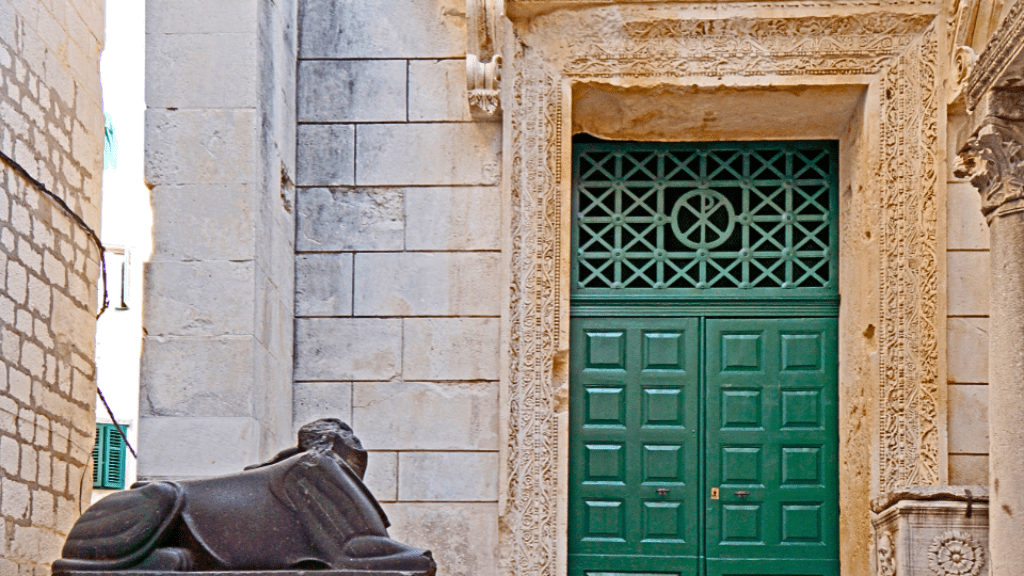
When it comes to things to do in Split, this spot is a clear answer for anyone wanting to grasp how history, religion, and culture intertwine here.
💡 Curiosity: In the 7th century, the temple was adapted as a Christian baptistery, which shows how the different eras overlap in this enclave.
The gates of the Palace: four entrances to lose yourself in time
One of the most interesting things to do in Split inside Diocletian’s Palace are the four monumental gates. Each one facing a cardinal point, and each one with its own history and charm. They were the ancient entrances to the Roman walled city, and today they still mark key entrances to the old town.
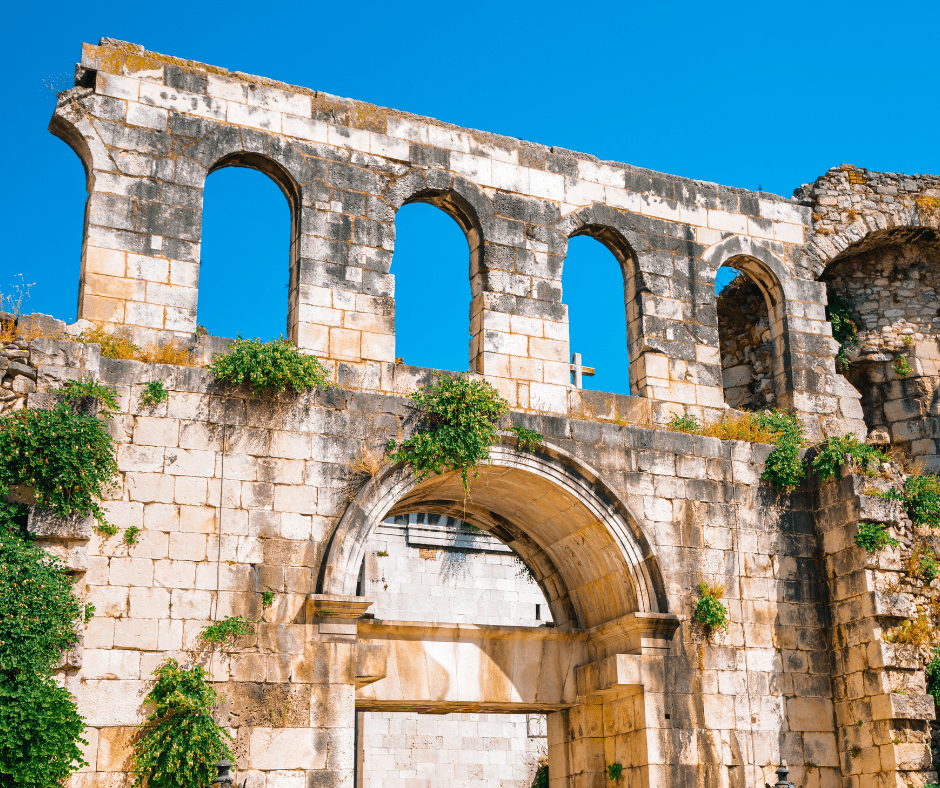
- The Golden Gate (Porta Aurea) is the most imposing. Originally used by the Emperor, it is decorated with niches and reliefs and stands next to the statue of Gregory of Nin, one of the most photographed corners of Split.
- The Silver Gate (Porta Argentea) connects the palace with the fruit and vegetable market (Pazar). From here you can go directly outside, making it a busy passageway for locals and travellers alike.
- The Bronze Gate (Porta Aenea) used to be the entrance from the sea. Today it is accessed through the cellars and connects the Peristyle with the Riva promenade. It is more discreet, but ideal for imagining how ships arrived in Roman times.
- The Iron Gate (Porta Ferrea) gives access to the clock square and is the only one that has been in continuous use since its construction. Passing through it is almost like crossing a threshold of time.
Touring Diocletian’s Palace is much more than just visiting a monument. If you are looking for things to do in Split and you only have a few hours, this place concentrates everything. But if you have more time, the city still has a few places worth visiting.
🧐 Are you still here? Would you really rather keep reading the blog than have all this content, and much more, packed into our visit to Split?
Other places to see in Split (outside the Palace)
Although the Old Town has a magnetism that is hard to beat, there are more things to do in Split that complete the experience and allow you to enjoy the city with all your senses. Exploring what things to do in Split will open the door to unforgettable experiences. Here are some of our favourites:
Riva Promenade
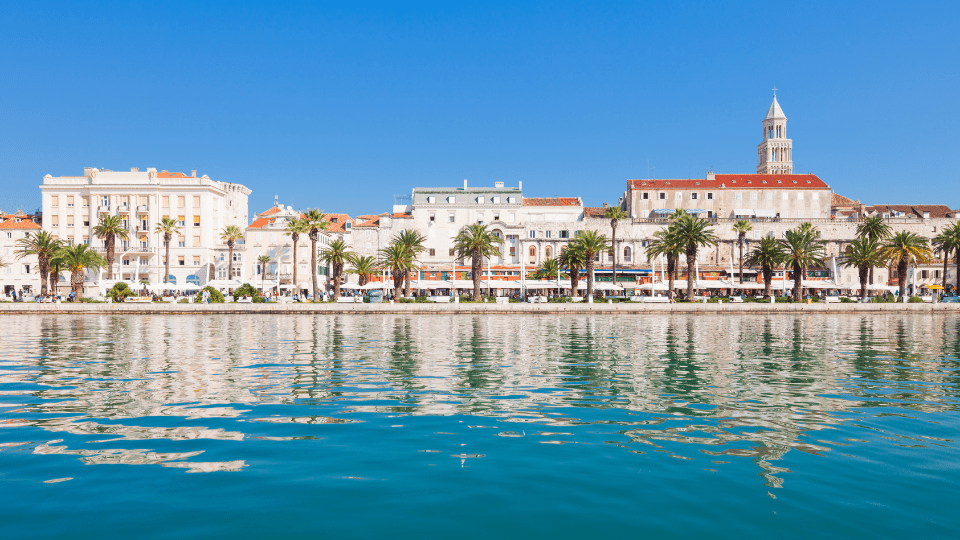
This is the social hub of Split, the place where everyone hangs out at some point during the day. This seaside promenade is lined with palm trees, benches, terraces, street vendors and street music . It’s the perfect place to sit with a coffee, watch life go by and watch the sun turn the facades of the old town golden.
The Riva also connects directly to the Bronze Gate, one of the entrances to Diocletian’s Palace from the sea. This historical connection between the city and the Adriatic gives even more meaning to its location: this is where Split breathes.
Republic Square (Prokurative)
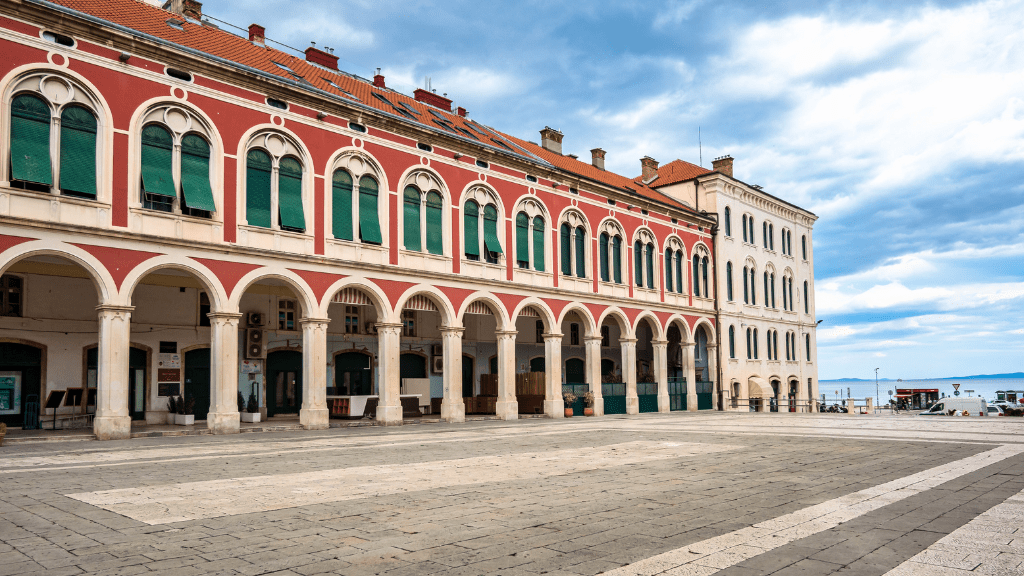
If you’re looking for somewhere larger, brighter and a little away from the hustle and bustle of the centre, this square is perfect. Republic Square, known as Prokurative, is notable for its Venetian-influenced architecture, with red porticoed buildings reminiscent of the famous Piazza San Marco.
Cultural events, concerts and festivals are held here, especially in summer. But even if you don’t go to any of them, it’s a good place to have a drink with an open view, surrounded by history, art and the sea. Put it on your list of things to do in Split.
💡 Fun fact: the square was built in the 19th century as a symbol of the city’s modern growth.
Pazar Market
Looking for off-the-beaten-path things to do in Split? The local market Pazar is a great way to experience the city like a local. It’s next to the Silver Gate, and is one of the most authentic places to get a taste of local life.
At this market you’ll find stalls selling fresh fruit, cheeses, cold meats, homemade bread, honey, olive oil and a host of local products that tell the story of Dalmatia through flavour. There are also flowers, clothes, souvenirs and even curious items that look like they came from a vintage junk room.
💡 Tip:
Go in the morning, when the atmosphere is in full swing. If you’re staying in a flat, you can do some delicious shopping here for a picnic or an impromptu local dinner.
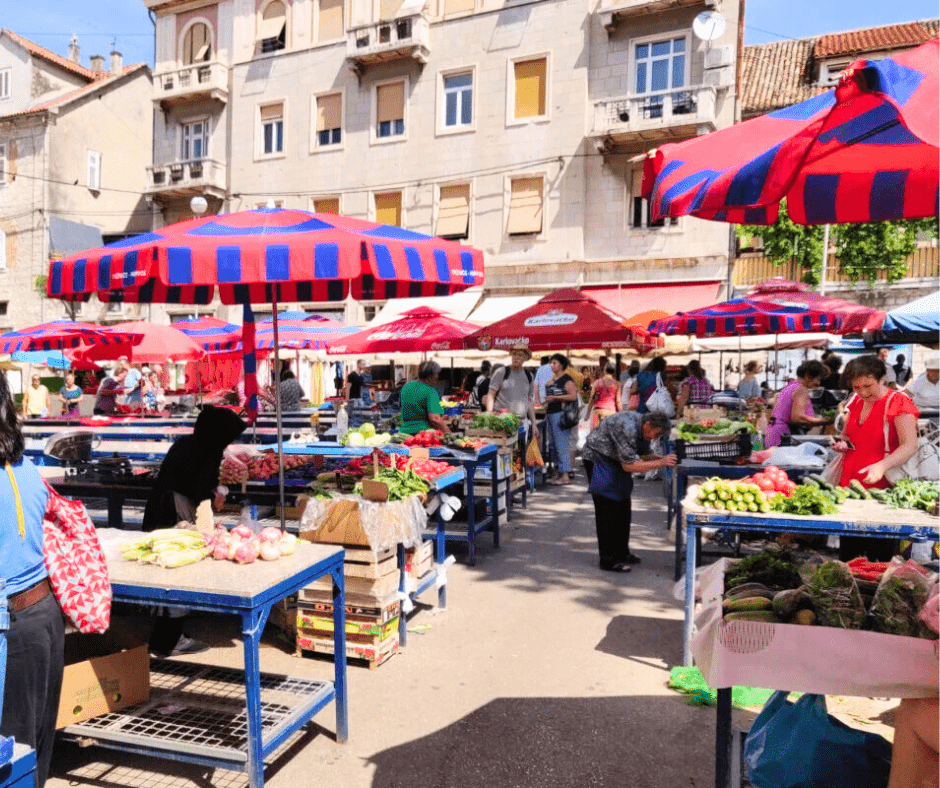
Marjan Hill: Split’s green lung
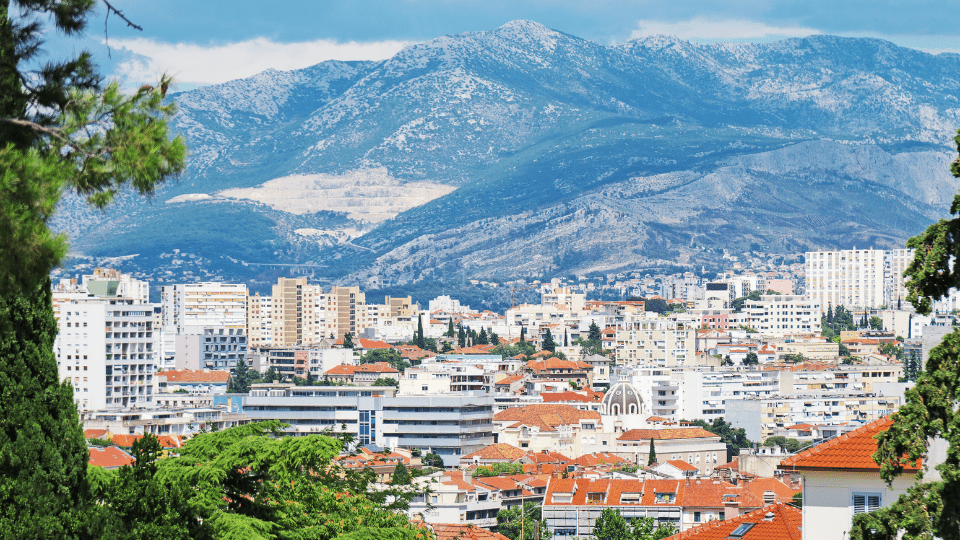
If you’re looking for a break from the narrow streets of the Old Town, Marjan Hill is one of the most peaceful and scenic things to do in Split. This forest park is located west of the centre and offers quiet trails through pine trees, spectacular viewpoints and an unforgettable panorama of the Adriatic.
You can walk up from the city (about 15-20 minutes) and stop at the Telegrin viewpoint, where the view stretches from the old town to the nearby islands. Along the way you’ll find small hermitages, benches tucked away in the trees and the occasional contemplative cat. Explore the top things to do in Split and get the full experience.
📸 Ideal for a photo with the city at your feet.
Let the DareMapp app show you the places that really matter. Interactive tours, tips and routes on your phone.
Beaches near the top things to do in Split
In your search for things to do in Split, don’t forget to include its beaches and viewpoints. Discover other things to do in Split beyond the typical and be surprised by its hidden corners.
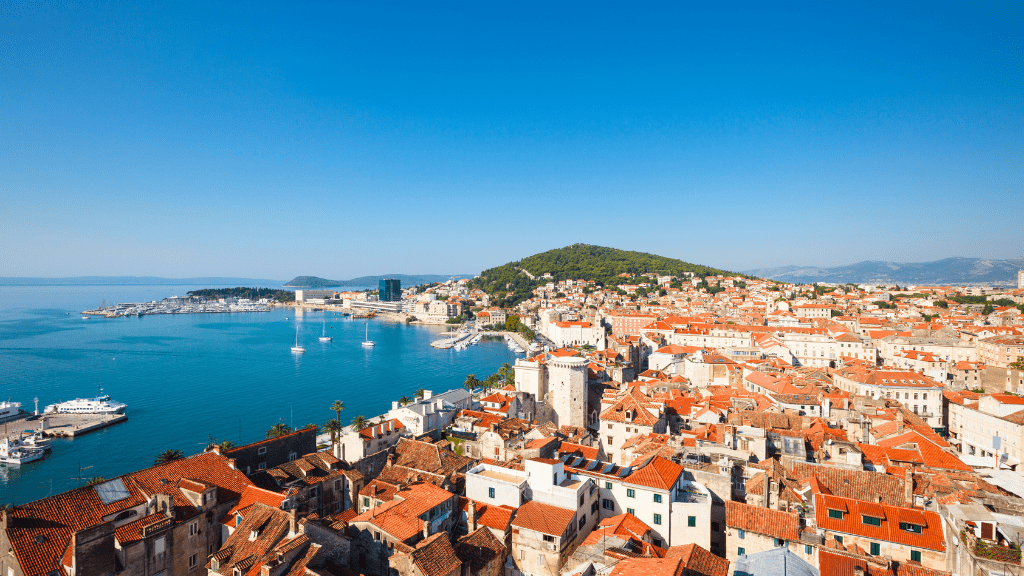
- Bačvice: the most famous and popular. Fine sand, shallow and lively atmosphere. It’s ideal if you fancy something more social (or try playing traditional picigin like the locals).
- Kasjuni: A more relaxed option, with clear waters and surrounded by nature. It is located at the foot of Marjan Hill, perfect for combining with the park route.
- Ovcice and Firule: Slightly smaller and quieter than Bačvice, but just as accessible from the centre.
Whether from a viewpoint on the hill or with your feet in the sand, Split invites you to stop, look and let yourself go. And if you’re still wondering about the best things to do in Split beyond the monuments, remember: sometimes the most incredible thing is simply to do nothing and just enjoy the moment.
Local gastronomy: what to eat in Split
Dalmatian gastronomy combines Mediterranean tradition, fresh ingredients and simple recipes that taste of sea, countryside and home. And if there’s one thing you shouldn’t miss when wondering about the unmissable things to do in Split, it’s the experience of sitting at a konoba, toasting with local wine, and discovering that here, time is something to be savoured too.
Brudet (or Brodetto)
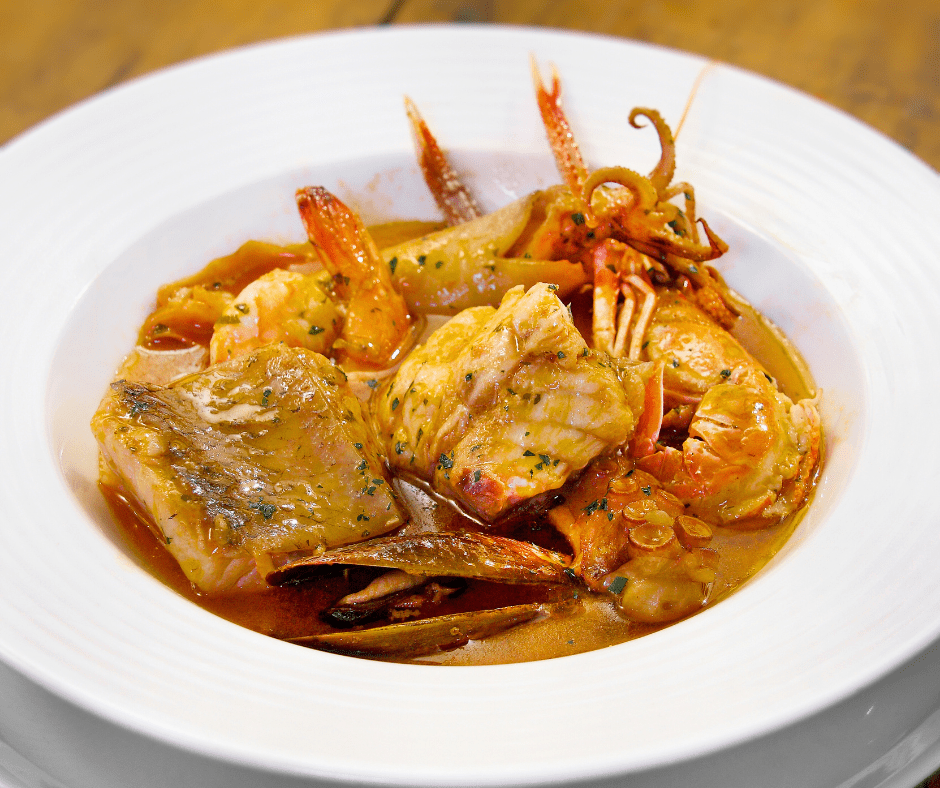
Brudet or Brodetto is a traditional seafood stew from the Dalmatian coast. It is made with various types of fresh fish, seafood, tomatoes, white wine, garlic and bay leaves. Each family has its own recipe, but they all have one thing in common: it is served hot, with polenta, and tastes of the sea, of home and of afternoons spent netting in the harbour. It is one of the most soulful dishes in the local gastronomy.
Peka of octopus
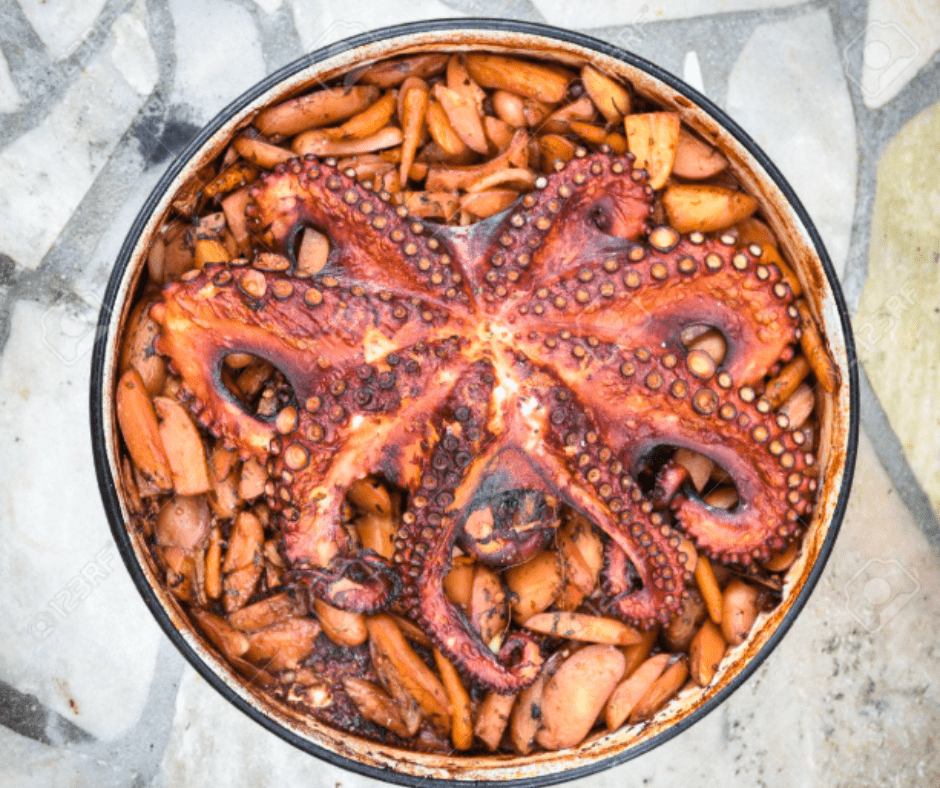
Peka is a traditional Dalmatian cooking method. It consists of slowly cooking ingredients such as octopus, veal, chicken or lamb under an iron bell called a čripnja or peka, which is covered with hot coals and ashes.
This slow process, which can take several hours, turns the meat or seafood into a tender, mellow and flavourful stew, accompanied by potatoes and vegetables. It is an ideal dish for sharing, but if you want to try it, it is best to book in advance, as it takes time and dedication. Peka is a must-try culinary experience that perfectly complements the top things to do in Split.
Pašticada
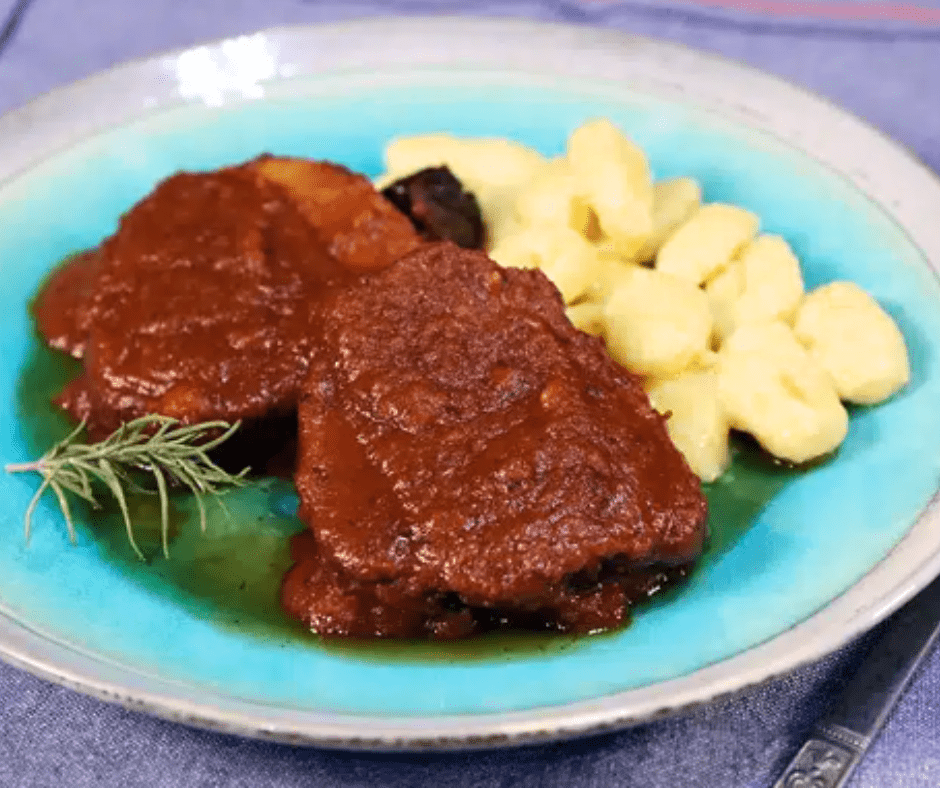
This veal stew is a classic Dalmatian dish you’ll find in and around Split. The meat is slow-cooked for hours in red wine, aromatic spices, dried plums, and a mix of vegetables—resulting in a rich, deeply flavoured dish that’s a must-try among the culinary things to do in Split.
It is traditionally a festive dish, reserved for family celebrations and special occasions. Although each family has its own recipe, they all agree on the result: meat so tender that it melts at the touch and a deep flavour that will win over any palate.
Gregada
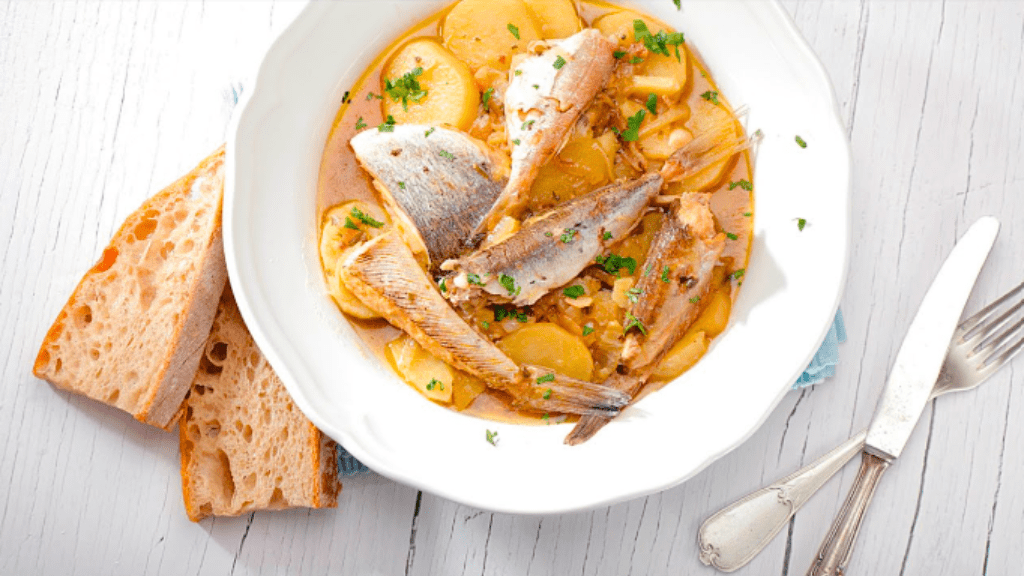
Gregada is a fisherman’s stew that represents the essence of Dalmatian cuisine. It is prepared with a mixture of fresh fish from the Adriatic Sea, along with potatoes, onion, garlic, a good splash of white wine and local aromatic herbs.
Simmered over a low heat, this dish has a clean, delicate and traditional flavour. Among the top things to do in Split, don’t forget that the gastronomic experience includes enjoying a Gregada in one of the seafront restaurants.
Dalmatinska pršut
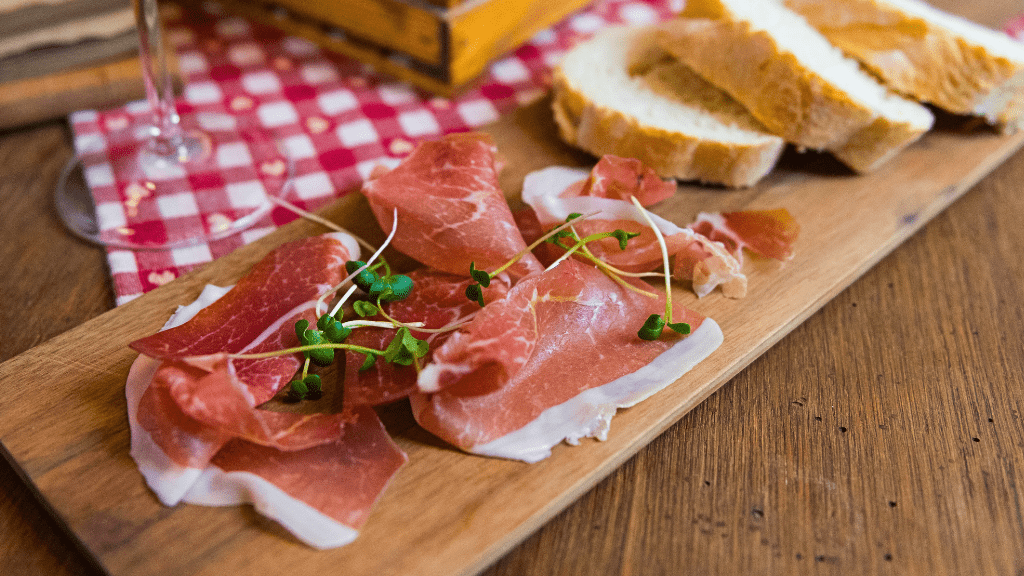
Dalmatinska pršut is the quintessential cured ham of the Dalmatia region, and tasting it is one of the most authentic culinary things to do in Split. Its open-air curing and light smoking give it a unique, intense but balanced aroma and flavour.
Served in thin slices, it is usually accompanied by local cheese and a drizzle of extra virgin olive oil, making a perfect starter to whet your appetite and immerse yourself in authentic Mediterranean tradition.
Fritule

Fritule are small balls of fried dough, light and fluffy, flavoured with lemon zest and a touch of rum or brandy , making them irresistible. Sprinkled with icing sugar, they are a traditional sweet that is enjoyed especially at local festivities and celebrations. Tasting these delicacies is among the must thing to do Split to round off any typical meal.
🤤 Makes your mouth water, doesn’t it? That’s why we’ve made it easy for you: the best places to eat in Split, ready to make sure you don’t waste a minute.
Say goodbye 👋🏻 to endless scrolling and start enjoying Split for real.
Plans and experiences to do in Split
Besides discovering the must-sees and savouring the local gastronomy, there are many plans that will help you connect with the soul of Dalmatia and better understand what are the best things to do in Split. From boat trips to charming neighbourhoods, here are some suggestions to complete your trip: Things to do in Split, beyond its walls.
Excursion to the Blue Cave, Hvar and 5 islands
One of the best excursions to do and the perfect complement if you’ve already explored all the things to do in Split, is the speedboat tour of some of the most spectacular islands in the Adriatic.
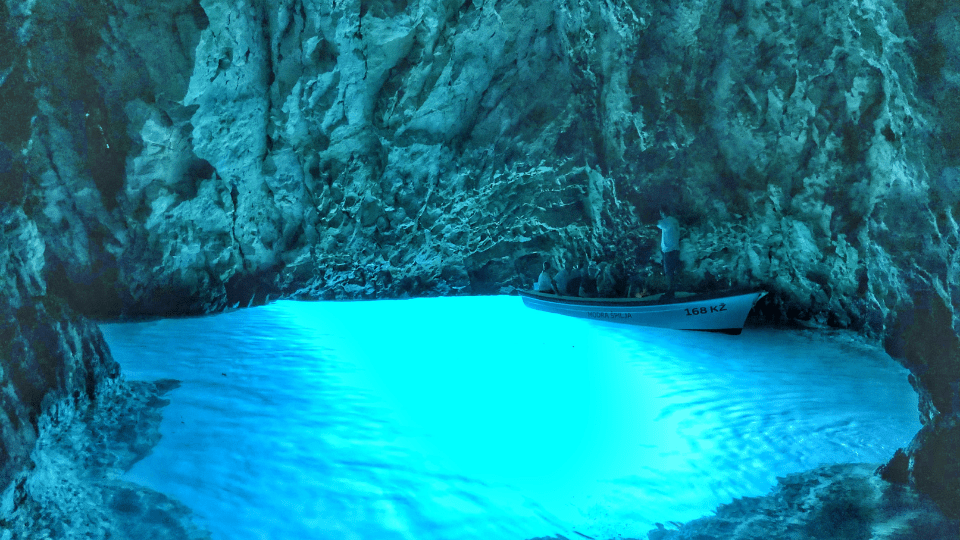
During the tour you’ll visit the famous Blue Cave, with its hypnotic turquoise glow; swim in the hidden bay of Stiniva, a beach surrounded by cliffs; and snorkel in the Blue Lagoon of Budikovac. You’ll also have free time for breakfast in the charming fishing village of Komiža, famous for being featured in the film Mamma Mia! and a stroll through the streets of Hvar, one of the region’s liveliest and prettiest islands, where you can visit its fortress and have lunch overlooking the sea. The best things to do in Split come together to create a true Mediterranean adventure.
You can get tickets and more information about this tour by clicking here.
Varoš quarter and local art
The Varoš quarter is one of the most soulful corners of Split. Once home to fishermen and labourers, today it mixes traditional cottages, steep alleys and charming shops. Here you’ll also find some local art galleries, perfect if you fancy taking home more than just a fridge magnet – find out more things to do in Split and be amazed!
Excursion to Trogir
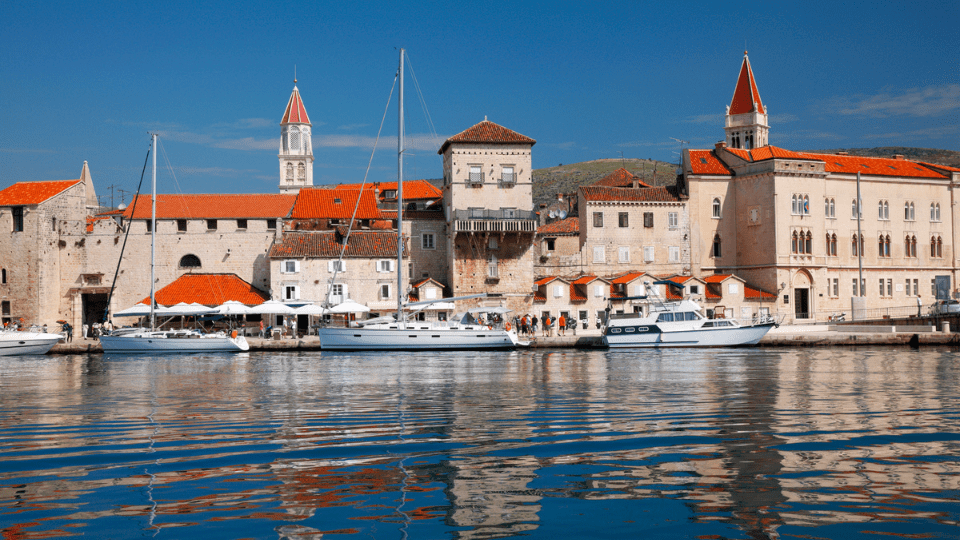
Just 30 minutes from Split, this small island town is a World Heritage Site. Trogir is a labyrinth of narrow stone streets, quiet squares, an impressive cathedral and a promenade perfect for sitting in the sun with a cup of coffee. One of the best things to do in Split for an unforgettable getaway.
👉 You can get there by bus, ferry or even private boat from Split.
Klis Fortress
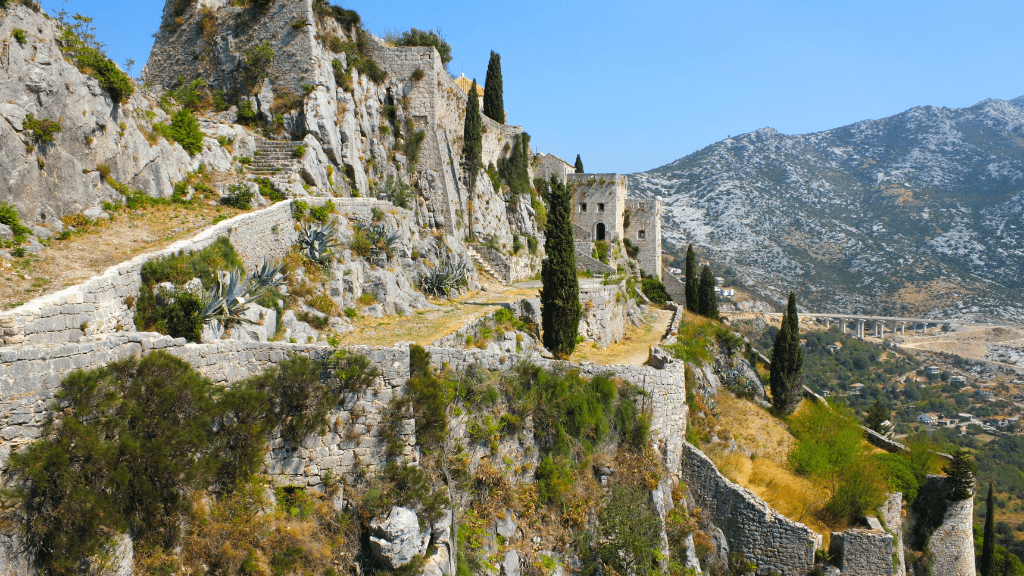
Just 20 minutes from Split, this hilltop fortress offers one of the best panoramic views of the Adriatic. It was a key player in the defence of Dalmatia and more recently, the setting for Game of Thrones. You can combine the visit with the Roman ruins of Salona nearby—making it one of the most fascinating things to do in Split for history lovers and curious travellers alike.
Dalmatian wine tasting
The Dalmatia region has an age-old wine tradition. You can go wine tasting with local wines (such as Plavac Mali or Pošip) at a wine bar in the centre or at nearby wineries. Many experiences include pairing with Dalmatian ham and regional cheeses.
Visit to the Museum of Illusions or Museum of Split
This is perfect if you are travelling with children or are looking for something different. The Museum of Illusions is interactive and very visual (📸 with a thousand curious photos for Instagram). The Museum of the City of Split, housed in a Renaissance palace, offers a quiet journey through local history.
Split facts and legends you (maybe) didn’t know about
Split is a city full of secrets, surprising anecdotes, and legends that give it a character all its own. If you’re looking for things to do in Split beyond its monuments, dive into these local curiosities.
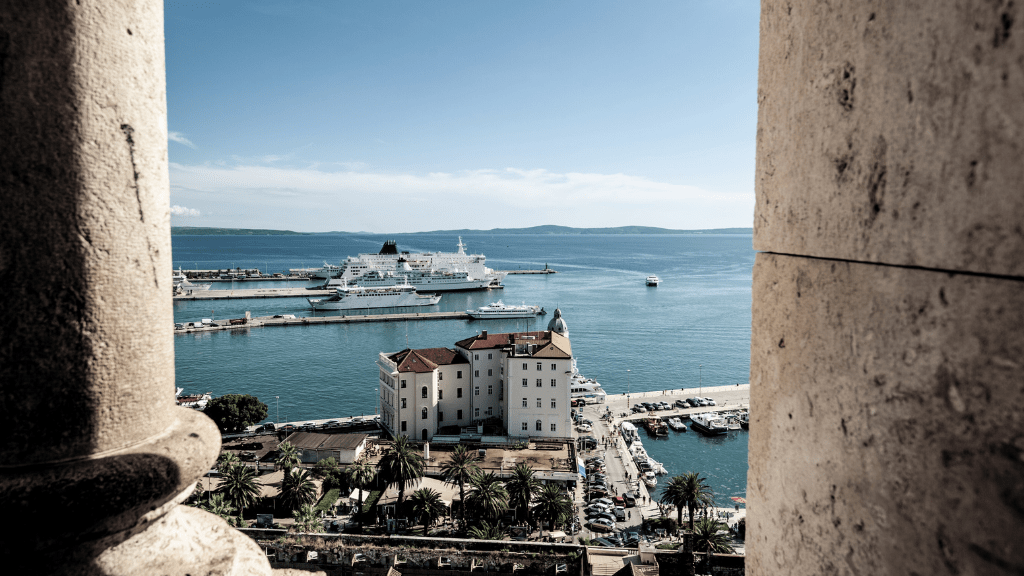
For a more mysterious take on the things to do in Split, don’t miss its ancient legends.
The dragon sleeping under the Palace
According to legend, a thousand-year-old dragon lives in the cellars of Diocletian’s Palace, guarding the emperor’s secrets. Some say that if you walk silently through its tunnels, you can still feel its breath. OK, maybe it’s the humidity, but the atmosphere allows for anything.
Diocletian rests… in Venice?
Although Emperor Diocletian’s mausoleum was transformed intotoday’s Cathedral of San Domnio, his tomb mysteriously disappeared centuries ago. Some theories suggest that his remains were taken to Venice during the barbarian invasions. Whether true or not, the irony is clear: the persecutor of Christians eventually gave way to a Christian cathedral.
The 3,500-year-old Egyptian sphinx
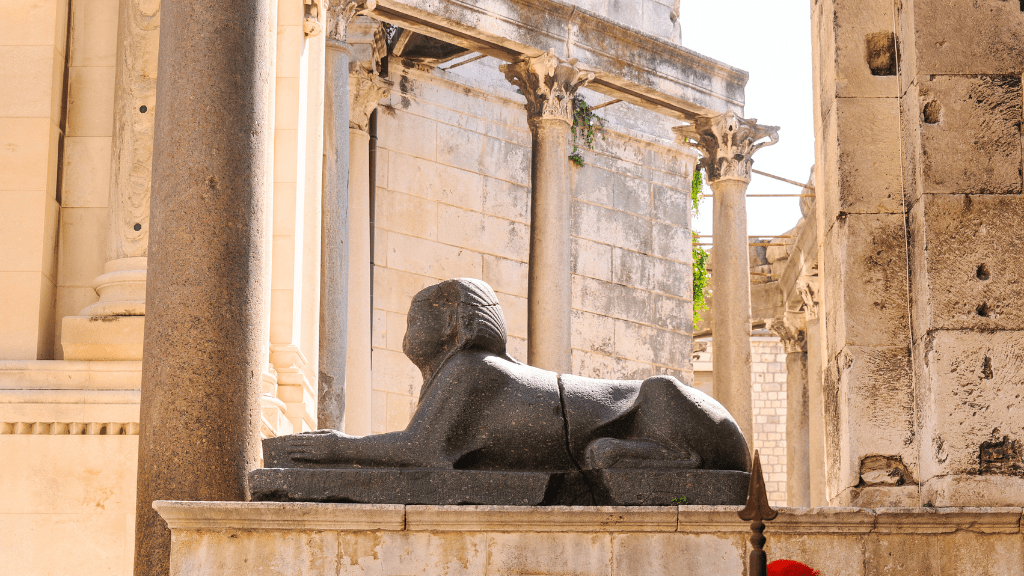
In front of the cathedral you will find a black granite sphinx. It is not a replica: it is more than 3,000 years old and was brought from Egypt by order of Diocletian. It is one of the few still intact, although its twin sister, which was in the Peristyle, was beheaded in medieval times “for being pagan”.
The tower that defies time (and the ground)
The bell tower of San Domnio was begun in the 13th century and was not completed until the 20th century. Its height and weight meant that for centuries it suffered cracks and collapses. The reconstruction was so complicated that the architects joked that getting it up in time for mass was a miracle.
Still looking for information about Split? Everything you are looking for is here.
With the DareMapp app, explore Split like never before: interactive tours, tips and routes on your mobile.
The finger that survived time
In one of the corners of the Peristyle, right where the imposing statue of Gregory of Nin stands, there is a striking detail: his big toe is completely worn away. The reason? A tradition that says that touching that toe brings good luck.
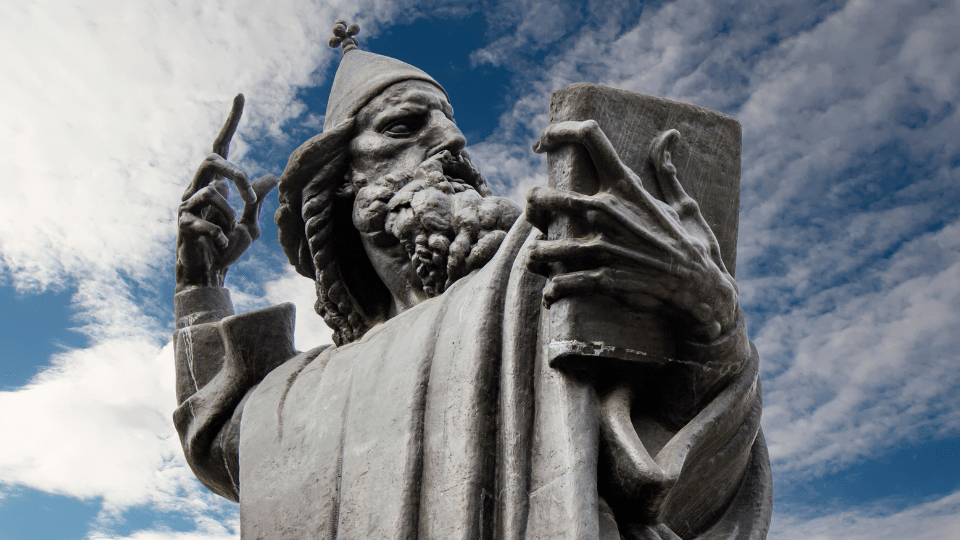
The curious thing is that the statue is not even as old as the palace: it was created by Croatian sculptor Ivan Meštrović in 1929. But since then, Gregory’s finger has been rubbed by thousands (perhaps millions) of hands. In fact, it has been touched so much that it has had to be restored several times!
And the best thing: people still do it with absolute devotion. Because when you’re exploring the best things to do in Split, any excuse to make a wish is valid. Would you touch it?
Practical tips and top tips for visiting Split
Before you dive into discovering all the things to do in Split, it’s a good idea to have a few travel tips at hand that can make your experience more comfortable, authentic and with fewer surprises. Here are the essentials for enjoying Split like a local. Every street and square tells a different story on the route of the must things to do in Split.
Currency and payments
The official currency in Croatia is the Euro (€) . Although most restaurants, hotels and shops accept credit cards (mainly Visa and Mastercard), it is advisable to carry some cash.
Cash machines (ATMs) are readily available throughout the city, but it’s best to use official banks such as OTP, PBZ or Zagrebačka banka, as independent ATMs tend to charge higher fees.
Getting around Split
Knowing the top things to do in Split is the key to making the most of every minute in this Adriatic gem.
- Split’s Old Town is compact and pedestrianised, so be prepared to walk.
- To get to areas such as Bačvice, Marjan or the harbour, you can walk or use the Promet Split public buses.
- A ticket costs about €1.50 (11 kuna) if you buy it at the kiosk, slightly more if you pay the driver.
- You can also rent a bicycle, electric scooter or even a scooter.
Eating out: where and when to eat
- Restaurants usually serve lunch from 12:00 to 15:00 and dinner from 18:00 to 22:00.
- If you want to try traditional dishes such as peka, it is essential to book in advance (at least 24 hours), as it is cooked for several hours under an iron bell.
- In high season, book 1-2 days in advance if you don’t want to end up in a random pizzeria.
Top tips for enjoying Split to the fullest
✅In Croatia, type C and F plugs are used, as in Spain, with 230 V current. You don’t need an adapter.
✅ Wear comfortable shoes. The streets in the historic centre are cobbled and can be slippery, especially if it rains or you are wearing flip-flops.
✅ Avoid peak hours to visit places like the Peristyle or the Cathedral, get up early or go at the end of the day. You will gain in calm and good photos without crowds.
✅ Diocletian’s Palace is your best ally to avoid getting lost. Use the four historic gates(north: Gold, south: Bronze, east: Silver, west: Iron) to find your way around the old town.
We hope this guide to Split’s must-see attractions will help you discover the essence of this walled city. But if you want to experience it to the fullest, don’t miss the DareMapp app!
With it you’ll have everything in just one app:
✅ Gamified routes through Diocletian’s Palace and its hidden corners.
✅ Local recommendations (authentic konobas, quiet beaches and charming bars).
✅ Excursions to nearby islands such as Hvar, the Blue Cave or Trogir.
✅ Plans to discover Split by night: terraces with a view, concerts and more.
💫 You’re just one click away from turning reading into adventure!
🗺️ Your Split route with Daremapp
📍 More than 30 points of interest
🚀 An organised route to make the most of your time
💡 Recommendations, excursions & unique experiences
❓ Questions, challenges and more than 2h of narrated content
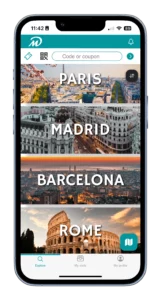
Split is a journey back in time between Roman walls, lively squares and views of the Adriatic. We hope this guide to the must things to do in Split inspires you to explore it.
Remember that with DareMapp you can take a multitude of interactive guided tours. Fun tourism in the main destinations.
Click here to discover all our destinations.
What better way to travel and discover a city than learning in a fun way? Visit our blog to discover a lot of tips about tourism.
Visit our social networks and find out what to see in hundreds of cities
